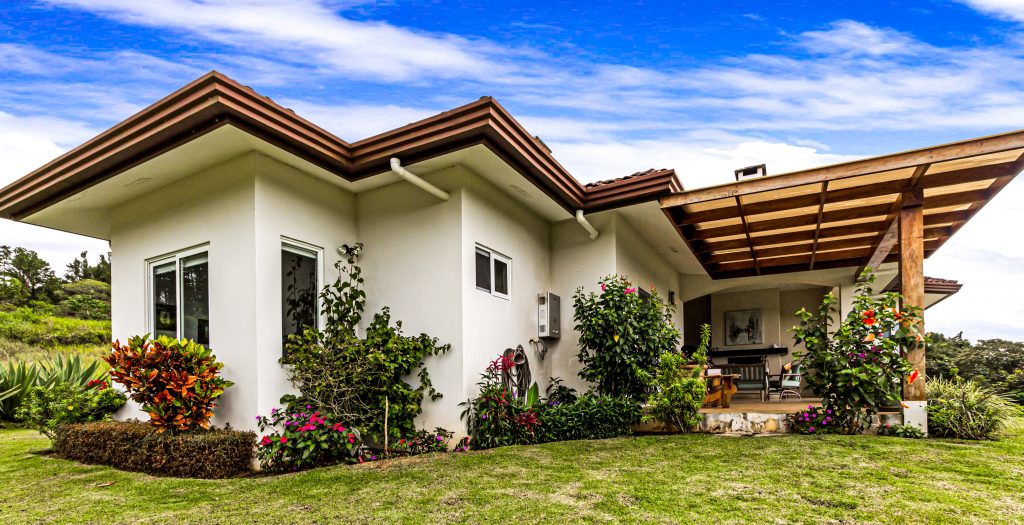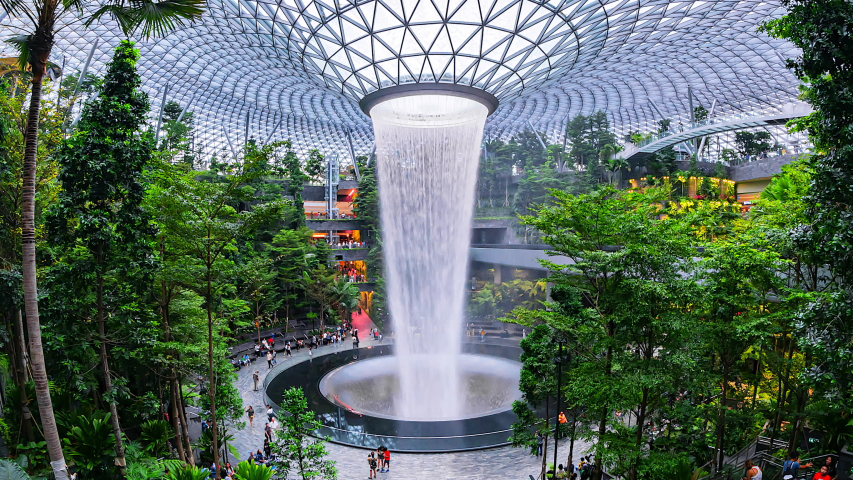
Architecture has been described in several ways through-out history. The main purpose of architecture is to keep the outdoors away and keep the occupants safe from the elements. Now, with the development of construction technology and lack of space, we have gone from building on the ground to building high-rises and skyscrapers. This has caused the complete breakage of the bond between man and nature. The concept of green buildings is one that has been around for a long time. Let’s take deep research into that.
Nothing is art if it does not come from nature
-Antonio Gaudi
A space without meaning and memories associated with it is not a home. Similarly, a building without nature is just a concrete box.
The biophilic architecture gained positive recognition and widespread following recently. The whole concept of biophilic architecture is the incorporation of nature and natural materials in architecture and design. The use of natural elements such as light, ventilation, greenery, and water increases the mental and spatial perception of architecture. It provides a stronger link between the person and their space.
The most prominent example of biophilich architecture is Singapore and The Jewel in Changi airport. This space is a designed space for public entertainment within the airport. It links three of the terminals. It features a large water feature called the Rain Vortex. It is in the centre of very high ceilinged and well-lit space, with lush foliage and tropical indigenous plants. This space is so well planned and integrated into the public domain that it forms the most iconic feature of the airport.

Another example is the South-Indian “Tharavaadu”. The old residences of Kerala feature a prominent central courtyard in the house. It is most often than not open to the sky and landscaped. This creates a focal point for the interior of the residence. Also, it makes sure the entire house is well lit and ventilated.
Old houses usually sit on a huge plot with ample space and tree cover. Some would have a pond within the compound. These houses had the kind of effortless green buildings we painstakingly recreate these days.
I believe that architecture, as anything else in life, is evolutionary.
-Bjarke Ingels
The biophilic architecture ensures the quality of the building and the living quality of the people within it. Most importantly, this makes the building more green both literally and from a sustainable point of view.
What are some of the important rules of Biophilic design?

1. Environment and features
The design has to mimic the patterns, materials, and forms of nature. There should also be natural elements in the building. They will break the conventional boxing-off that is usually associated with most buildings. The natural elements should be part and parcel of the design process and not added as an afterthought. For example, light, air, water, landscape, and foliage, etc.
2. The locale Green Buildings
Consider the location of the building and its immediate surroundings. The site and its landscape should match and compliment the soil condition and existing patterns of vegetation. Ensure to avoid disrupting the natural slopes, drainage patterns, and existing foliage of the site. We should essentially be able to plan around these obstacles. This helps in reducing the environmental impact of constructing green buildings on the site.
3. Psychology and nature Green Buildings
The human mind makes more valuable connections with spaces that involve some aspect of Biophilic design. Space has to be well lit and ventilated with some aspect of greenery nearby to rest our gaze upon. This will help us make better memories, have better mental health, and be more productive.
4. Indirect natural stimulus Green Buildings
The indirect introduction of natural elements also provides the necessary human-nature relation. For example, in the form of images, materials, etc. It proves effective to use materials like wood, stone, lime, red-oxide, clay, and other finishes. They are sustainable and environmentally less damaging. Not only that, but they are also more efficient in terms of heat reduction in our tropical climate.
5. Bio-mimicry Green Buildings
Mimicking the elements of design seen in nature is one of the most common and effective methods of biophilia. For example, repetition and sequences such as the golden ratio that is seen in nature is used in architecture and design. Even though the two are not directly linked, the human mind associates this with biological elements.
6. Sensory Green Buildings designs
Architecture that appeals to the five senses is called sensory design. It includes minute interventions such as tactile differences in the flooring to more in-depth sensory stimuli like running water and play of light and shadow. We have the ability to hear birds, see light change during the day, feel the difference in textures on the wall, and smell the different flowers. Using these senses to heighten the experience of the building is sensory design. And, it can be a part of Biophilic architecture.
Why does biophilic design (Green Buildings) matters?
The most obvious benefit of green buildings is the psychological benefits and health-related comfort. It also ensures a better state of mind. This is just one of the many benefits of this method of design and architecture.
Another advantage is the environmental and sustainability benefits. Such a design can create efficient and immersive cooling. This helps reduce the energy footprint of the building as a whole. Adding landscape and trees also decreases the carbon footprint of the construction. It also ensures that we are giving back more than what we take from the site.
In conclusion, biophilic architecture and design can make a better world for us to live in. As people involved in the construction sector, we have the power to design and build the world of tomorrow. Therefore, the next time we build, let us take a collective promise to build better, build efficiently, and build to reciprocate all that the planet has given us.
Excellent read Netra! Learnt something new 🙂
Thank you !
Good article